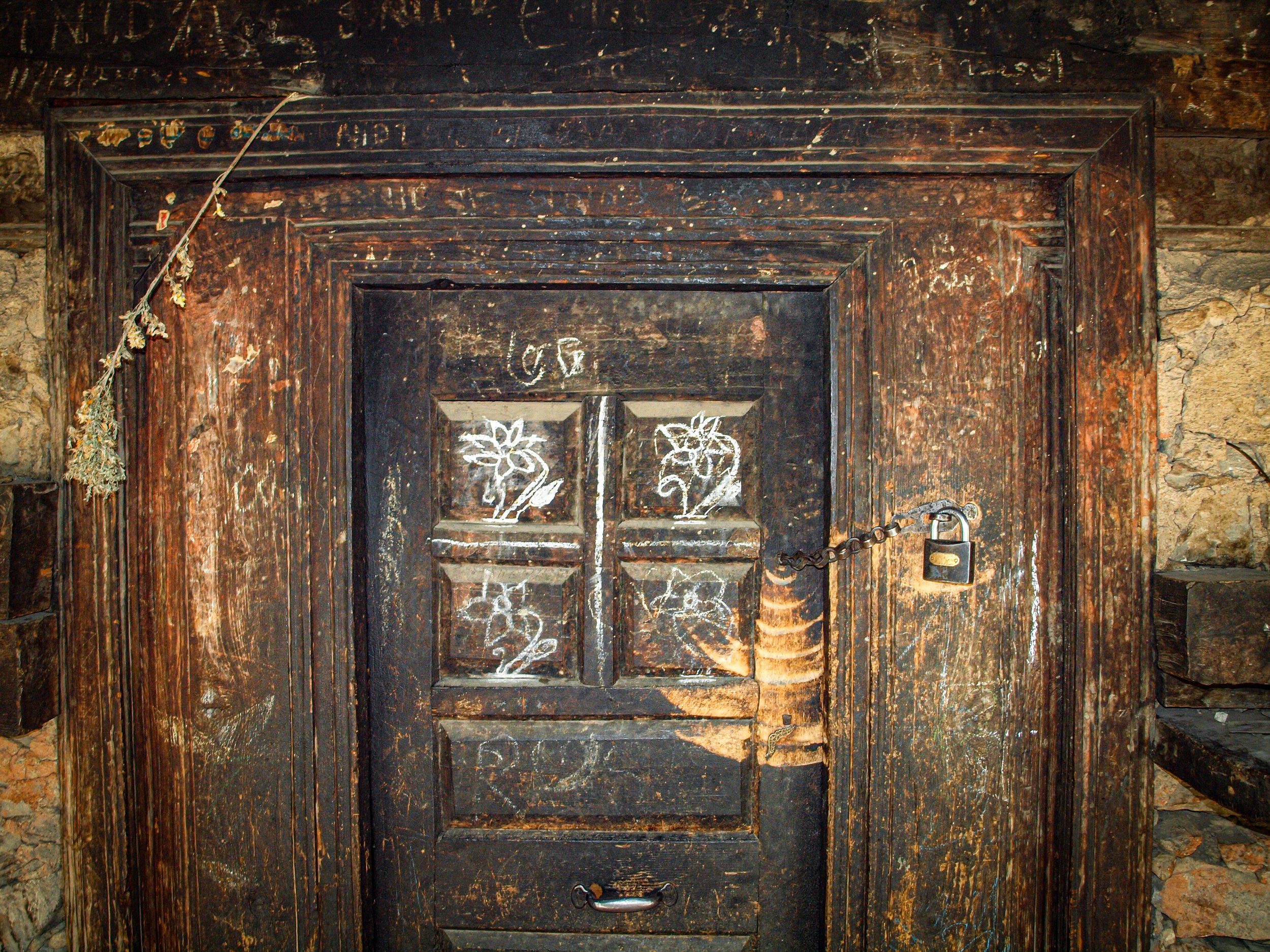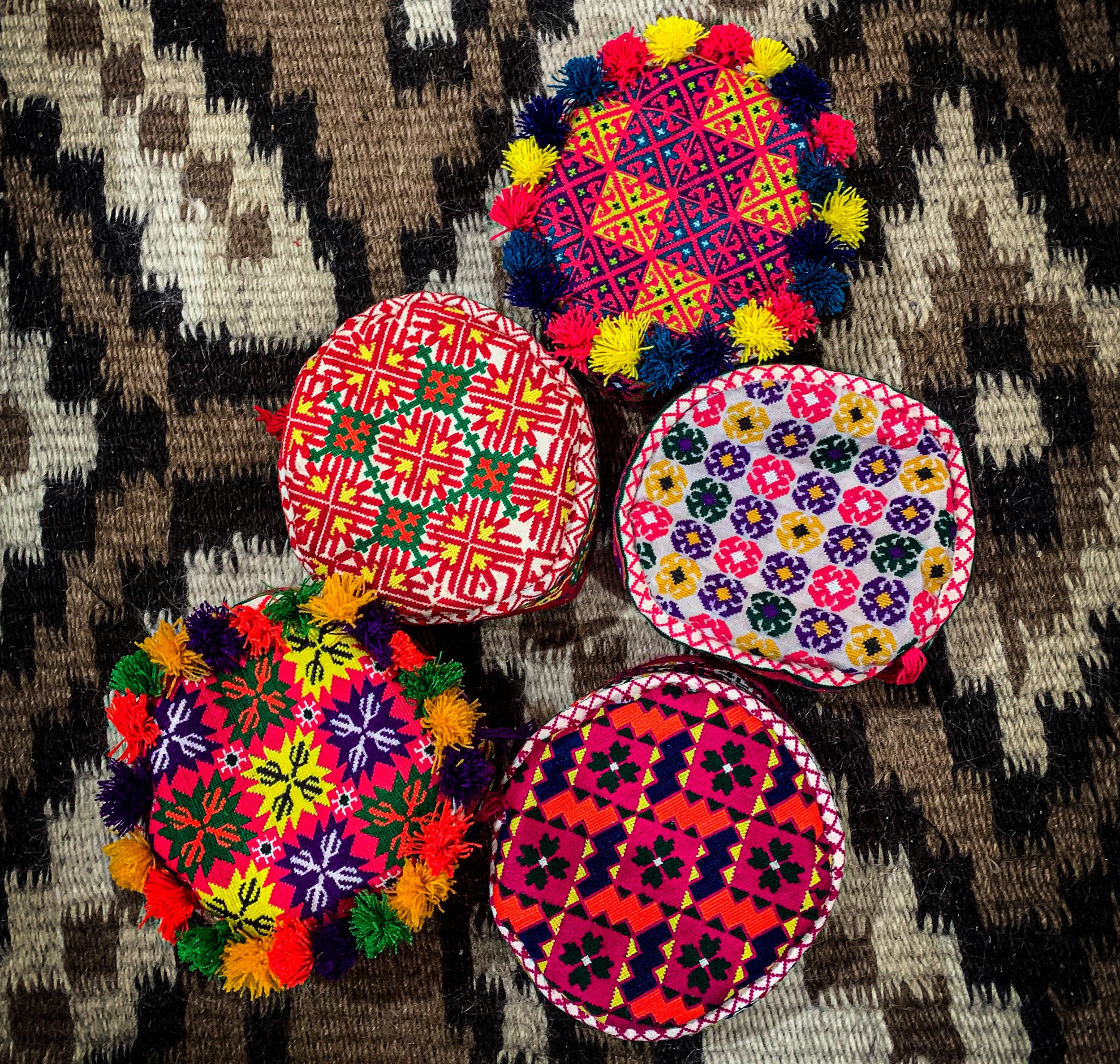اِعْلان (Elan) Announcement
Ürümqi, 2013 East Turkestan
اَخْلاق (Akhlaaq) Manners
کاریگری (Karigari) Handicraft
آفَت (Afaat) Calamity
آرْزُو (Arzoo) Longing
اِجْلاس (Ijlas) Conference
رَنْگ (Rang) Colour
تشنگی (Tishnaghi) Thirst
لرزش (Larzish) Trembling
وَضاحَت (Wazahat) Explanation
صدمَہ (Sadma) Trauma
شوق (Shauq) Yearning
دستکاری (Dastkari) Handiwork
Flower of Scotland
حکمت (Hikmat) Wisdom
چاہ (Chah) desire
ٹوئڈ Tweed
One of the main cross cultural elements used was Scottish Harris Tweed, which is an internationally renowned and recognised woollen fabric that is woven by weavers from Outer Hebrides, Isle of Lewis, North-West Scotland. The tweed acted as a cultural symbol and a commodity (Appadurai 1986) from Scotland which was taken to Chitral and used as a means to prompt, connect and elicit memories. There was no direct communication between the female embroiderers from Chitral and the weavers from Lewis. According to Adil, the tweed, a tactile material carried the aroma of Hebridean moorland; the chants of the loom encapsulated the stories of everyday life; the colours and patterns celebrated the life force of community; and its coarse texture echoed the endurance and vitality of human existence. As a result, the tweed acted as an agent, and formed a symbiosis in which Chitrali women used embroidery to inscribe and trace a trail of their personal narratives.
Traditional Charma Embroidery on Chevron Harris Tweed
آسمانی (Asmani) Celestial
فَن (Fan) Art
Lewis Dresser
Embroidered women’s skull caps placed on Chitrali Palesk (Traditional rug made out of goat hair)































